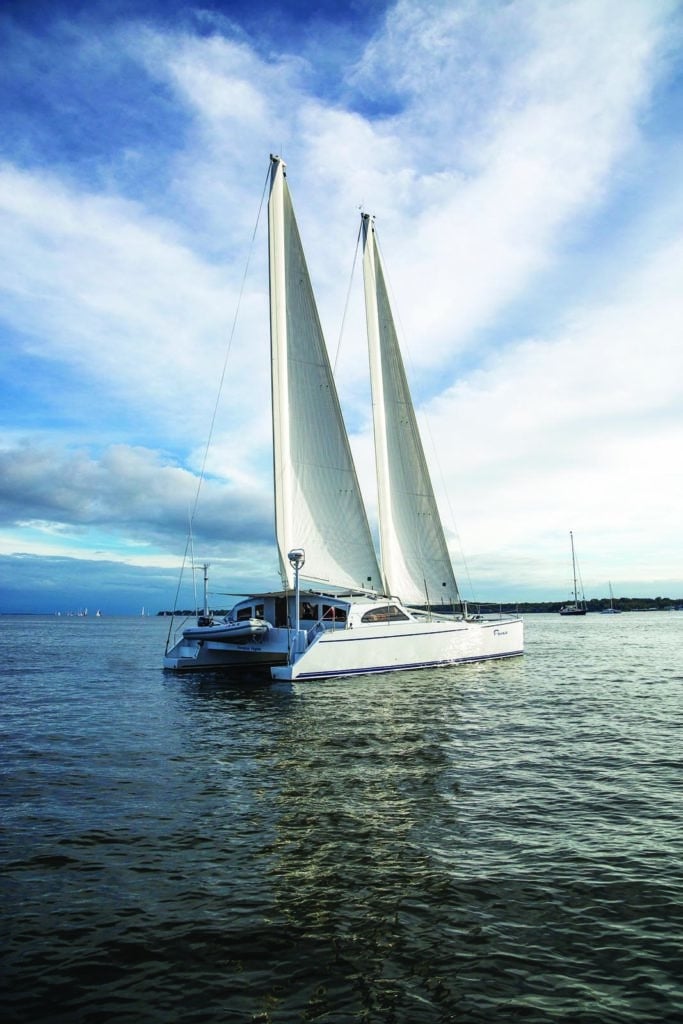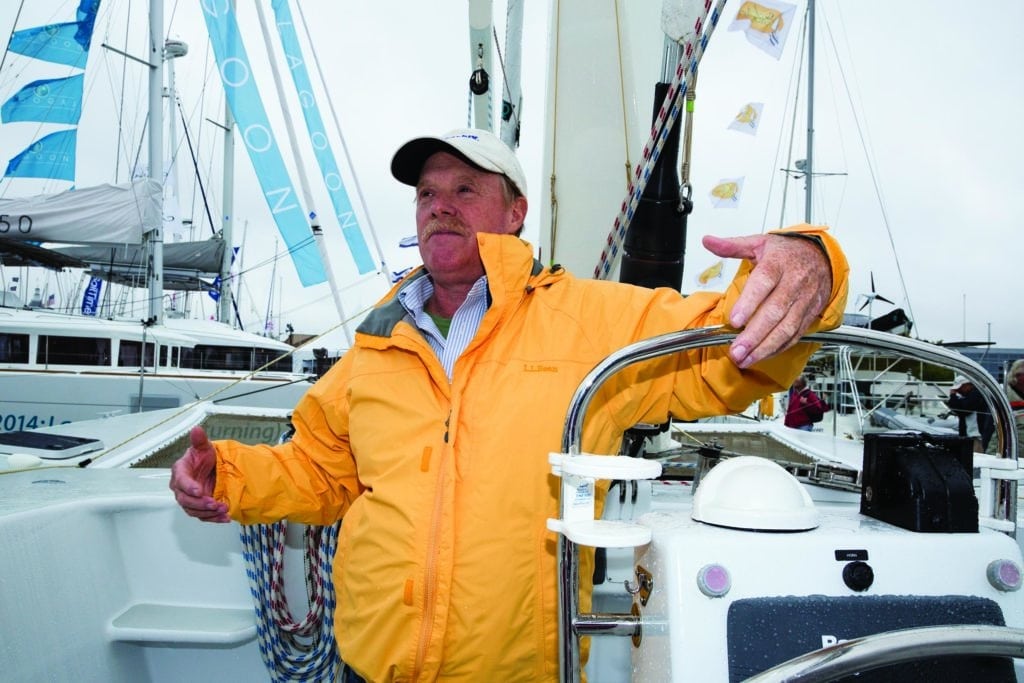A Bridge Between Eras
Simply put, no discussion of contemporary influential American multihull luminaries — designers, builders or brokers — would be complete without the inclusion of naval architect Chris White. These days, Chris can generally be found in one of two places: at his home and office in South Dartmouth, Massachusetts, or with his wife, Kate, in whichever far-flung harbor his Atlantic 55 catamaran, Javelin, currently lies.

This dual existence is especially fitting, for Chris occupies two distinct places in the modern catamaran continuum. With the innovations he has brought to cats — like the forward cockpit he drew for his Atlantic series (which has been widely “borrowed” by others) and his more recent freestanding MastFoil rig (with twin spars that eliminate the mainsail) — he’s readily recognized as one of the more inventive and imaginative thinkers in the field. Yet he spent the beginning, formative years of his career working with legendary multihull pioneers and designers Jim Brown and Dick Newick, whose boats were often as much about art as they were about science. More than any other person currently in the game, Chris is a bridge that connects past legacies with the open-ended future.
It’s important to note that, unlike many of his peers, Chris was a cruising sailor and boatbuilder first, and a yacht designer second. In other words, his two earliest boats — interestingly, they were both trimarans, not cats — were floating means to specific ends, to get him out on the high seas.
He built his first tri, a Jim Brown Searunner 31, Shadowfax, in his parents’ driveway on Long Island. This was an educational experience, especially once he was offshore, where he amassed firsthand knowledge that would inform and influence much of his later work. Many of those lessons were evident in the second boat he built, a slim and elegant 52-foot ketch-rigged trimaran called Juniper, the first large multihull he designed himself. In the early 1980s, Chris sailed the boat into my hometown of Newport, Rhode Island, and I somehow finagled a tour. It was, without question, the coolest and most unique and graceful cruising boat I’d ever been aboard.
It was in 1983, after two years cruising aboard Juniper, that he formally launched his own yacht-design business. His most popular design series, right from the outset, was the Atlantic collection, which now encompasses a range of cats from 42 to 77 feet, several of which are currently in production. The idea of a forward cockpit for sailhandling, coupled with an adjacent inside-steering station to keep the driver out of the elements, again came from his days aboard his old Searunner, which employed a midship cockpit. It has proved to be the signature element of the Atlantic line, and nearly 30 years after its introduction, it has certainly withstood the test of time.

Over the years, Chris has collaborated with many builders of his designs, and currently, his Atlantic 47 MastFoil is being produced in Chile at the Alwoplast S.A. boatyard. The revolutionary cat was a nominee for our 2014 Boat of the Year competition, and it was fascinating to watch Chris present the yacht at the U.S. Sailboat Show in Annapolis, Maryland, and afterward to put her through the paces on Chesapeake Bay. Clearly, he’s a man who loves his work.
The centerpiece of the boat is the MastFoil rig, a feature that manages to be simple and complex at the same time. The objective is definitely straightforward: eliminate the big, heavy, fully battened mainsail that drives most modern cats, and replace it with a pair of jibs set in a column on split, unstayed spars. The execution is trickier, for those masts are actually rotating wings with movable trailing edges called gurney flaps.
Both the designer and his creation enthralled BOTY judge Tim Murphy. “Chris is one of those iconoclasts; he challenges people’s notions about what a boat should be, how a boat should function,” says Murphy. “During our sea trials he did a demonstration where he completely stalled one of the wings to show us the versatility of the MastFoil, and sure enough, in very light air, we watched a full knot of boat speed drop when he stalled the forward wing. Chris is clearly a guy who likes to play, to experiment, to tinker.”
He also truly enjoys working with Alwoplast, and not only because the company does first-class work at a fair price. No, the best part, for Chris, is that he gets to test his finished boats in the wild waters off the coast of Chile. The designer, above all, remains a sailor.








